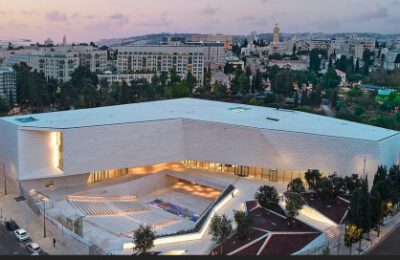 ROME Eastern Europes Jews have come out of the shadows.
ROME Eastern Europes Jews have come out of the shadows.
When the Cold War ended 20 years ago with the fall of the Berlin Wall, the Velvet Revolution in Czechoslovakia and the eventual collapse of the Soviet Union, Jewish communities in the region were small, weak and generally veiled.
Now Jewish life, culture, religious practice and ethnic identity are part of the contemporary mosaic often unabashedly so.
When I began working in Poland in 1990, it was almost completely taboo to tell your friends that you were Jewish, said Polands American-born chief rabbi, Michael Schudrich.
Today it is just a normal thing to say to almost anybody here in Poland. What was taboo only 20 years ago is today a curiosity or interesting or for some, of no consequence at all.
The fall of communism two decades ago sparked a burst of energy and optimism among European Jews as newly democratic European countries instituted religious freedoms and restored long-broken ties with Israel.
Israeli, American and other western Jewish groups fueled a host of programs aimed at reviving Jewish life in the region, helping build Jewish schools, institutions and religious congregations.
And the eastward expansion of the European Union in 2004 and 2007 formally abolished the East-West frontier that for decades had divided postwar Europe and its Jews.
Today there are Jewish clubs, theater groups, publications, blogs and even Facebook groups in addition to active synagogues, culture festivals and an alphabet soup of Jewish organizations that coordinate everything from communal welfare to pro-Israel lobbying.
BUT nearly a full generation after the end of communism, some of the excitement has faded and many of the old challenges remain.
Despite new income from property restitution and nascent local fundraising, few Eastern European Jewish communities are self-sufficient. Many remain tiny and weak, and others are beset by conflict.
Ironically, one development of post-communist Jewish life was not simply the revival of Jewish communal life but often of multiple and even competing or some might say feuding community organizations, said Rabbi Andrew Baker, the American Jewish Committees director for international Jewish affairs.
In 2004, he recalled, a power struggle between two rabbis in Vilnius boiled over into fistfights that prompted the closure of the synagogue.
In 2005, threats and lawsuits launched against each other by two Jewish communal organizations in Zagreb, Croatia, made banner headlines.
And a hotly contested Jewish community election in Prague saw fisticuffs between supporters of rival sides.
I would sometimes joke that this open fighting was proof that authentic Jewish life had returned, Baker said.
Meanwhile, new challenges have emerged: the global economic crisis, the rise of anti-Semitic far-right parties in some countries, the impact of Muslim immigrant communities and virulent anti-Israel sentiment that sometimes spills over into anti-Semitism.
On many levels, the difference between East and West remains huge, according to Jonathan Joseph, president of the European Council of Jewish Communities, a network linking Jewish community groups in about 40 countries.
During the boom years, it may have appeared that everything had elided together, but this is illusory, Joseph said. The economies of these countries are still desperately thin, and if the West has had bad economic influenza, the eastern countries have had double pneumonia.
JEWISH communities across Europe are working together on key social welfare and education projects, particularly in former communist states, he said, but bad times make bad internationalists, and there has been a lot of turning inward.
The situation differs from country to country, depending on local politics, the state of local democratic institutions and economic factors as well as on the size, activity and critical mass of local Jewish communities.
About 150,000 Jews are believed to live in the countries of East-Central Europe, excluding states that were part of the former Soviet Union, such as Russia and Ukraine.
Of these, Hungary has the largest Jewish population by far, with an estimated 100,000 Jews, nearly all in Budapest and only a small fraction of them affiliated.
Jewish activists in Budapest say that many problems exist despite a plethora of Jewish groups, more than a dozen active synagogues and a new Jewish youth culture.
Mircea Cernov, who heads Haver, a new foundation in Budapest that aims to promote dialogue and educate young Jews and non-Jews about Jewish culture, heritage, history and religion, says there are few real leaders who can move the community forward.
Is there a huge potential? he said. Yes! The question is, what next?
Whats next, in Hungary and other countries, will depend on the young generation of Jews who can scarcely remember the world as it was before 1989.
MANY young Jews reject a Jewish identity based on Holocaust memory or anti-Semitism. Some have embraced religious observance, others seek new ways of Jewish identification. Still others are assimilating.
Many who are engaged Jewishly travel widely and network on the Internet, forging links across the continent and overseas, maintaining close ties with Israel but preferring to remain in Europe.
There are a lot of things coming from the grassroots, said a professional at a Jewish organization who has worked for 20 years on Jewish community development projects all over Europe.
The new generation is eager to learn and open to new experiences. Networking with other Europeans is very easy they speak the same language, and its part of globalization.
















